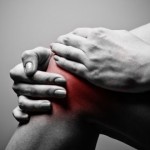Learning to use the methods that are appropriate to one’s lifestyle, functional ability, setting, and value structure is important; not every strategy is appropriate for every person. Over time and with practice, individuals can learn helpful strategies to soften the effects of pain or make their experience of living with it more positive. Pain management self-efficacy refers to persons’ beliefs that they can perform selected strategies that will modulate or relieve their pain. Increasing self-efficacy reduces the feelings of helplessness. A collaborative patient-provider approach is necessary to help patients learn to use pain management methods appropriately.
The overall definition of pain management gained from this concept analysis is “success in taking care of or handling the pain by using certain actions and by directing and controlling one’s own use of these actions.” This concept implies personal involvement and self-management.
Patient-Provider Partnership Key
One thing that we do know about arthritis-related pain and its management is that successful management requires the involvement of the individual. Success requires a partnership between the patient and the healthcare providers (e.g., physicians, nurse practitioners, physical therapists, and occupational therapists) involved in care. It seems safe to say that managing pain and the pain experience depend to a great extent on the person’s self-management, with the healthcare professional playing the supportive role.
There is growing awareness that individual behaviors can influence the symptoms of chronic disease, such as pain and activity limitations. The provider can prescribe medication, teach exercises and ways to perform activities of daily living, and teach management strategies (e.g., relaxation techniques, using activities for diversion, and using positive self-talk), but the individual patient decides whether or not to carry them out. Dialogue between the patient and professional is needed to determine the effectiveness of the techniques and the need for modification or changes.
We have great models of self-management, such as the self-management program begun at the Stanford Arthritis Center by Lorig and Fries.3 Individuals can now also access various Web sites that provide information about their conditions and approaches to managing them. These include the sites of the ACR (www.rheumatology.org/public/factsheets/index.asp), Arthritis Foundation (www.arthritis.org), Medline (www.nlm.nih.gov/medlineplus/arthritis.html), and the Centers for Disease Control (www.cdc.gov/arthritis). While many of the available written materials provide instructions for practice, whether these are accurately implemented by patients may be open to question. The involvement of the practitioner is, therefore, key to implementation through demonstration, guided practice, and evaluation.
Assessing the patient’s pain intensity, pain experience, and use of management methods is an important part of the professional’s supportive role when planning and evaluating treatment with the patient. There are numerous instruments available for the assessment of pain intensity, mostly one-item rating scales measuring pain from 0 (no pain) to 10 (pain as bad as it could be).


